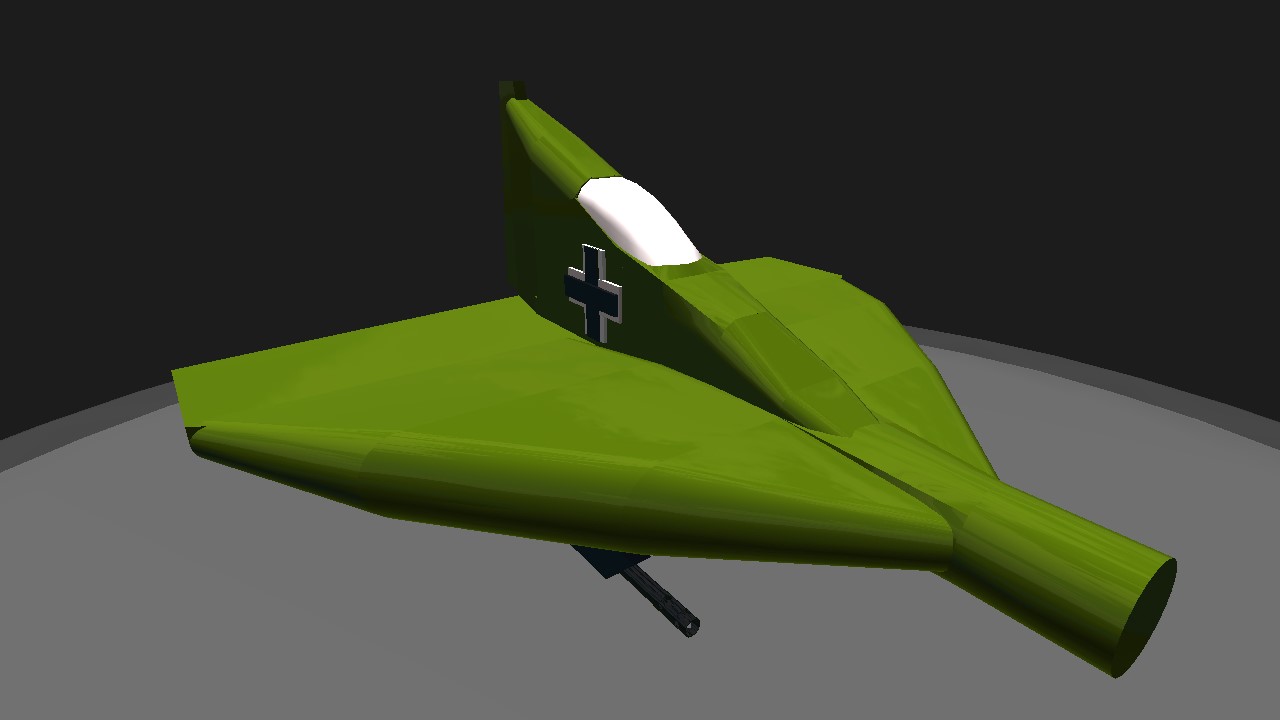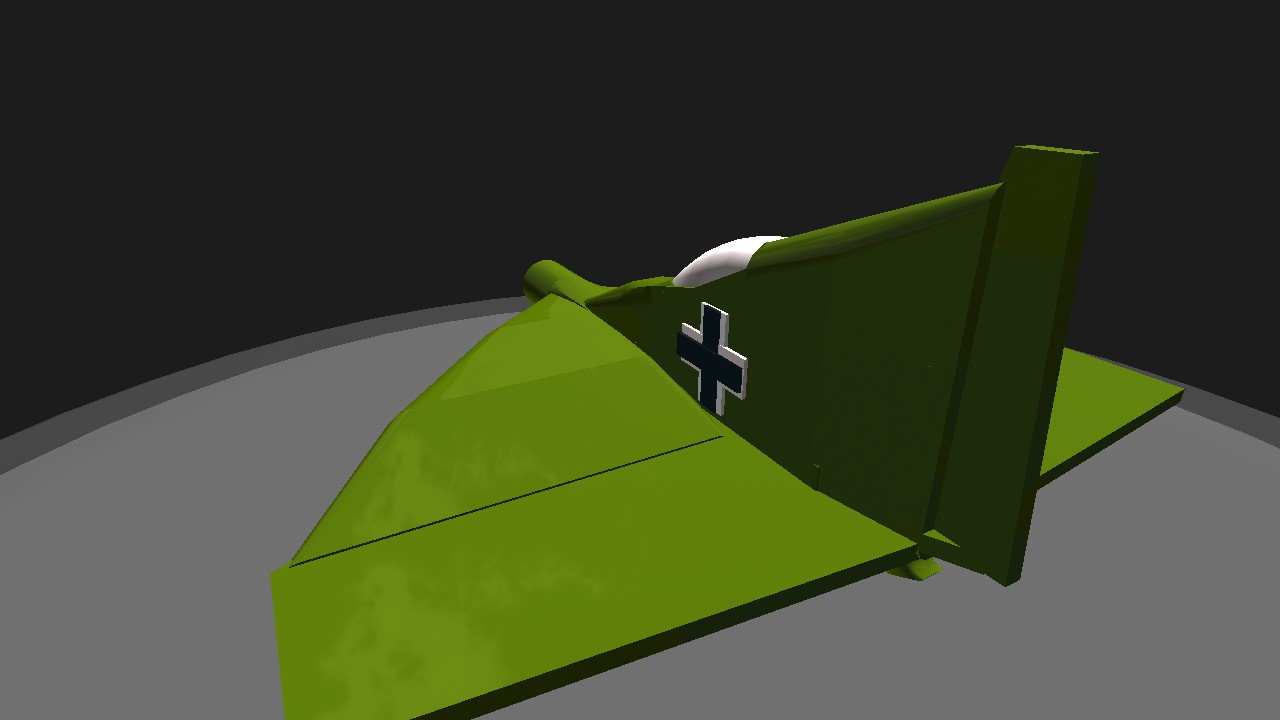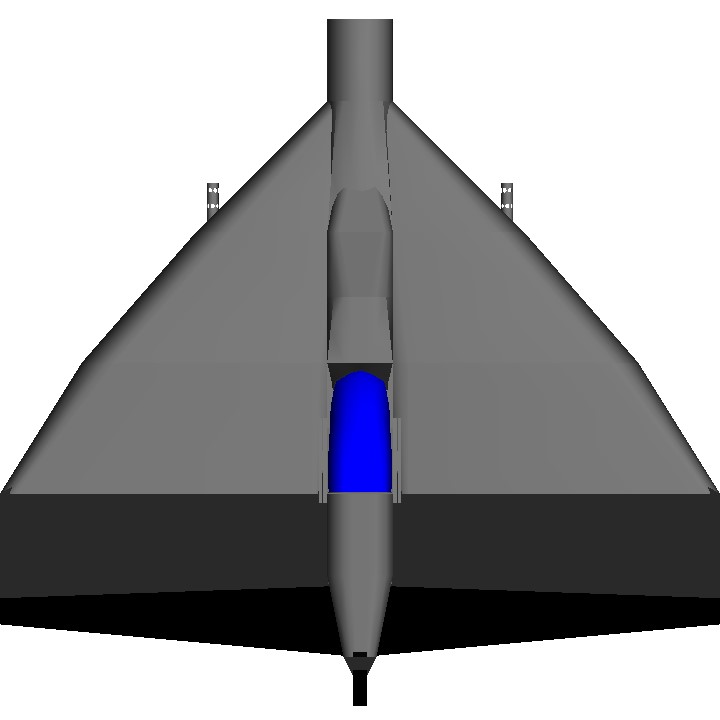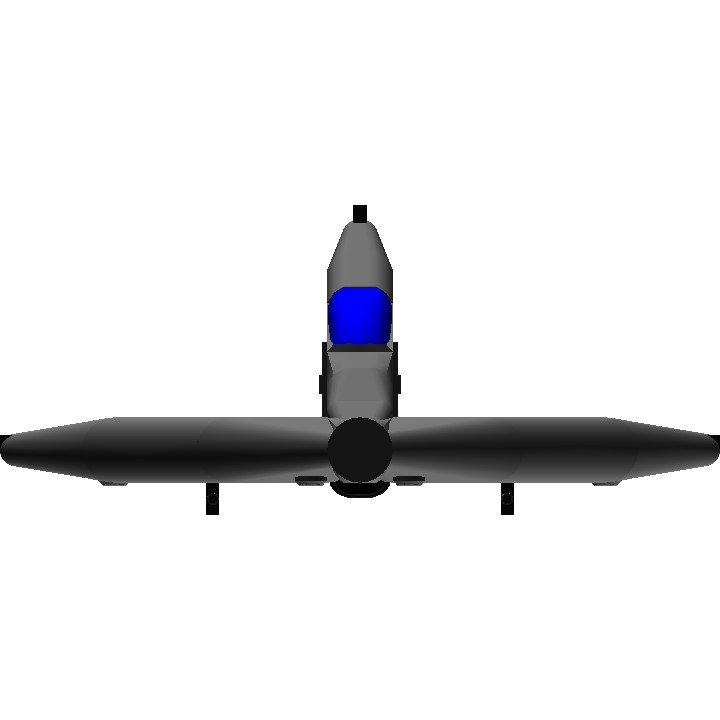I tried to make it as close to original as possible its a bit slower than than original. it is mainly for looks but it still flys well. there are no landing gear i just couldn't find a way that worked and looked good so you have to start in the air. and now some history: conventional fuels were in extremely short supply by late 1944, Lippisch proposed that the P.13a be powered by coal. Initially, it was proposed that a wire-mesh basket holding coal be mounted behind a nose air intake, protruding slightly into the airflow and ignited by a gas burner. Following wind-tunnel testing of the ramjet and the coal basket, modifications were incorporated to provide more efficient combustion.The coal was to take the form of small granules instead of irregular lumps, to produce a controlled and even burn, and the basket was altered to a mesh drum revolving on a vertical axis at 60 rpm. A jet of flame from tanks of bottled gas would fire into the basket once the P.13a had reached operating speed (above 320 km/h), whether by using a rocket to assist takeoff or by being towed.The air passing through the ramjet would take the fumes from the burning coal towards the rear where they would mix under high pressure with clean air taken from a separate intake. The resulting mixture of gas would then be directed out through a rear nozzle to provide thrust. A burner and drum were built and tested successfully in Vienna by the design team before the end of the war. source Wikipedia. Have fun :)
Specifications
General Characteristics
- Predecessor Lippisch P.13a prototype
- Created On Android
- Wingspan 18.0ft (5.5m)
- Length 17.1ft (5.2m)
- Height 7.5ft (2.3m)
- Empty Weight 3,714lbs (1,684kg)
- Loaded Weight 6,119lbs (2,775kg)
Performance
- Power/Weight Ratio 2.203
- Wing Loading 47.8lbs/ft2 (233.5kg/m2)
- Wing Area 128.0ft2 (11.9m2)
- Drag Points 2535
Parts
- Number of Parts 45
- Control Surfaces 5
- Performance Cost 142







interesting